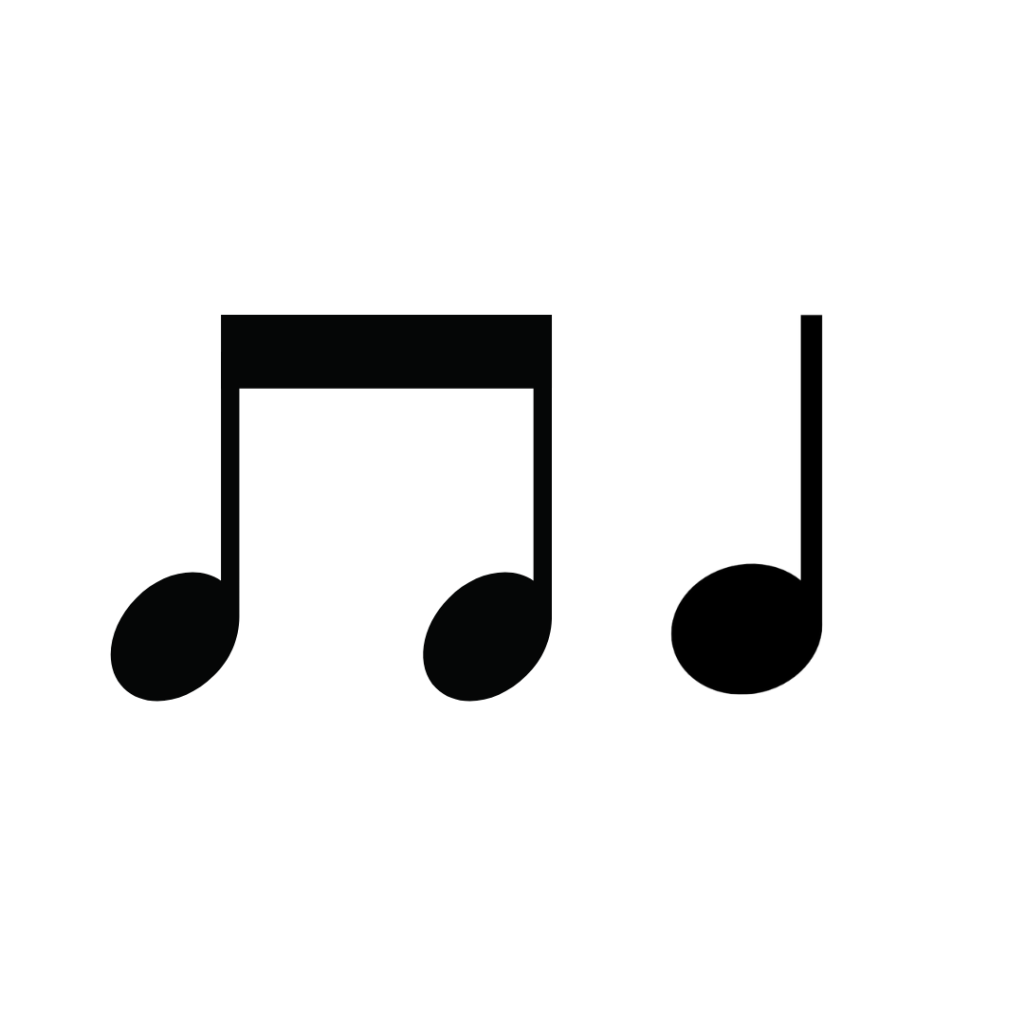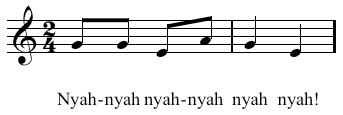4 How Do Children Learn Music?
Martina Vasil
Observing and Respecting Children’s Musical Abilities
Children are able to perform and understand music far more complex than what is found in basal series (e.g., Share the Music, Quaver). Respect that. Give space for children to show you what they know. Often teachers will delay student learning in favor of sticking with the lesson plan or learning objective of the day.
Simple directions can spur a variety of responses from students. For example, “Show the beat on your body” can result in children in grades K–2 to swish their hands, tap their stomachs, take big steps, or dance on the beat.
Sometimes children are showing you what they hear instead of the direction you gave. If you say “show me the beat”, they may actually be drawn to the rhythm of the words in the poem you said. Why not leverage their natural impulse to move to the rhythm?
Exercise
Watch this 10 min video “The Bad Way to Teach Music To Babies.” Jot down some thoughts you have about what the author has said.
How To Best Teach Music
Music is an aural phenomenon. Much like learning a language, children learn about and how to create music through an initial period of immersion, experimentation, and play. Do not rush to teach standard Western European notation; there is no need. Knowing that children start to learn how to read/write in Kindergarten after about five years of immersion, think about grades K–2 as being the immersion period for children learning music. There is plenty of time in grades 3–5 to learn how to read and notate music.
It is important that you learn how to identify both rhythmic and melodic patterns that can be taught to children.
- Consider notating music in a way that is more similar to how students hear the music.
- Consider the natural way words and phrases are grouped.
- Use patterns within the context of music. Isolated rhythms result in a lack of musicality.
- Use echoing frequently.
- Clap or sing a rhythmic or melodic pattern, and have students echo it back. Body percussion can be useful to show emphasis. For example, in 3/4 meter, adding a stomp on 1 indicates that it’s a strong beat. Using lighter body percussion on 2 and 3, such as a clap, shows they are weaker beats.
- Always model as musically as you can. For example, when you clap, make the clap bouncy and light, not dead and stopped.
Movement
Movement is key in teaching children music, because it helps them connect to phrases, beats, rhythms, and melodies to their bodies. This can include:
- Dancing to the beat
- Showing a musical phrase with their hands
- Walking to a beat
- Bouncing a ball to the beat
- Playing a rhythm on a drum
- Showing legato and staccato in the body
Teaching Beat and Rhythmic Patterns
Beat is often taught unmusically. This occurs when you see students slapping the beat on the floor or their legs or when students use body percussion unmusically, such as slapping the floor on every beat instead of the more musical “pat snap clap.”
Key Takeaway
Students do not have to beat time to sing songs or play music!
Recommendations for teaching beat:
- Notate beats with horizontal lines rather than vertical; this is easier to read and has a sense of flow rather than a heavy downward gesture.
- Encourage students to tap the beat vs. clap the beat. This is more musical and easier to do than clapping.
- Keep notation simple, children should be able to “get it” within 10 minutes. If they don’t, back up your teaching plan and meet them where they are.
Always teach the beat and rhythms in patterns and use your ear, not the notation as your guide. The reason for this is that there are many drawbacks to how rhythms and meters are notated.
- Sounds are grouped together according to mathematical divisions of beat and measures, which often don’t match aural patterns of music.
- When read off a page, rhythms and meters are too often performed mechanically, which works against musicality.
- Over-reliance on teaching music from notation may cause students to have unmusical experiences.
When you teach note values by themselves, you are missing the point of helping students understand patterns of notes. When you teach this way, the music notation, instead of the musical sound, is driving music pedagogy for children.
Key Takeaway
Why do we forfeit the musicality that comes from singing and reading patterns according to the way we hear them (language groupings) in order to teach patterns according to the way we see them: notes grouped by beats and bar lines? ~Bennett, 2016, p. 287
Recommendations for teaching rhythmic patterns:
- Rhythm syllable systems—use aural-based approaches to identify sounds rather than note value names. For example, use “ti ti ta” instead of “eighth, eighth, quarter” to identify this rhythm:

- Do not pulse long notes (e.g., whole note); sustain the voice and gestures. For example, when teaching a whole note, use the body to move through space for four counts.
Band Students
You may find this 15min video on sound before symbol for beginner band interesting. The first 8 minutes is the most helpful, as she reviews a lot of research showing the benefits of sound before symbol. The rest of the video she discusses her research proposal, which means she has thought through how to set up her study, but did not conduct it yet.
Additional Considerations
- The terms “long” and “short” aren’t the most useful when describing how something sounds.
- “Fast” and “slow” relate to the speed of the movement, therefore those terms are better suited for duration.
- Performing rhythms (e.g., clapping or tapping) best demonstrates the speed of quarter or eighth notes when describing them as fast or slow.
- Children better connect the way they experience sound with the way they are moving as they clap/tap/touch/read.
- Use rhythmic patterns naturally found in folk and popular songs as a start for teaching rhythm to children—that is the music most of your students will be most familiar.
Teaching Melodic Patterns
Always teach melodic concepts as patterns. Students will not be successful if you try to have them sing a single note after you. This would be the equivalent of students saying a letter of the alphabet after you, then expecting them to write a whole sentence. Think of how language is learned—in patterns!
Music majors are usually pretty tied to notation. Free your eyes and use your ears when engaging in teaching elementary music.
Sol-Mi Songs
The solfège pattern “sol-mi” is very popular in elementary music materials, with “la” usually following. This is because of the classic childhood call or taunt:

Be wary of only using songs with sol, mi, and la, however. It becomes boring (for both the students and you) and very few popular songs today contain those simple patterns. You must think through what your objectives are for learning. If it’s for students to practice reading notation or composing with a few notes, then perhaps sol mi la would be good choices. However, if you want students to sing a variety of songs, understand song context, and make connections to music in and out of school, you must quickly broaden beyond sol, mi, and la. You might ask yourself the following questions:
- Am I picking songs for children based on pedagogical simplicity rather than musical interest?
- Are my objectives that students sing for fun/pleasure or sing for pedagogical goals?
- Are limited-range songs vocally appropriate and musically reasonable for the development of young students’ vocal ranges, expressivity, and pitch-matching?
Teaching Form
Form can be understood and taught in a variety of ways, but the best way is through movement. Often game/songs and folk dances are the best sources for teaching form, but you may also use manipulatives like streamers to show form with recordings or have children act things out.
Down in the Valley
Watch and listen to this video of the game song, Down in the Valley, from the New England Dancing Masters. What rhythmic patterns stand out to you? Melodic? How would you label the form?
In summary
Don’ts
- Don’t teach songs that were created only to teach specific intervals or rhythms (they are corny and inauthentic).
- Don’t limit the songs you use in class just because the students may not be able to notate them yet.
Dos
- Use folk and popular songs as a basis for teaching.
- Listen for melodic and tonal patterns in songs to teach patterns.
- Sing the whole song many times to maintain its musical characters. Do NOT sing the song once through, then expect students to echo back sections of it. They haven’t heard it enough.
References
Bennett, P. (2016). Questioning the unmusical ways we teach children music. In C. R. Abril & G. M. Gault (Eds.). Teaching general music: Approaches, issues, and viewpoints (pp. 286–307). Oxford.
Vasil, M. (2014). Children’s spontaneity in an Orff-Schulwerk classroom: A qualitative study. The Orff Echo, 47(1), 34–36+38.
